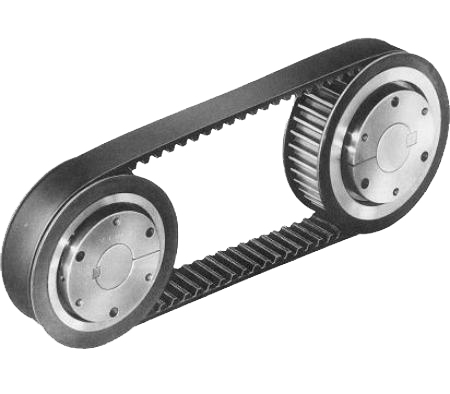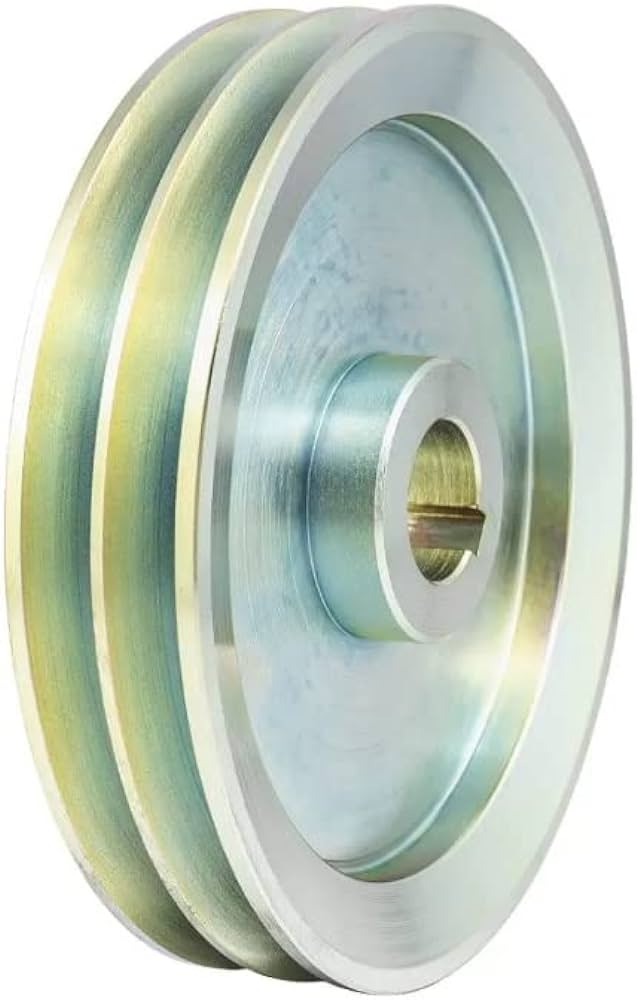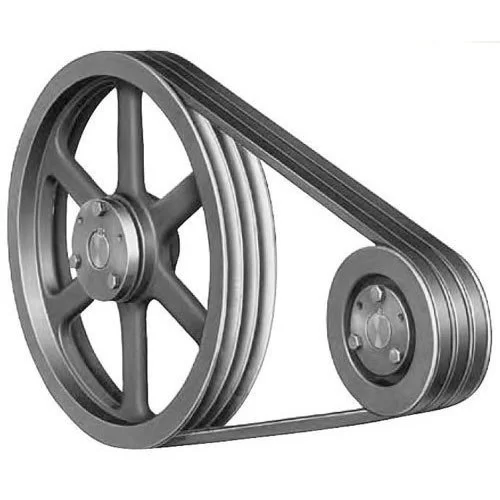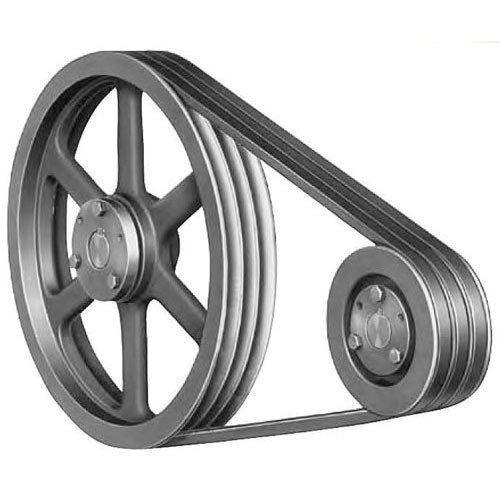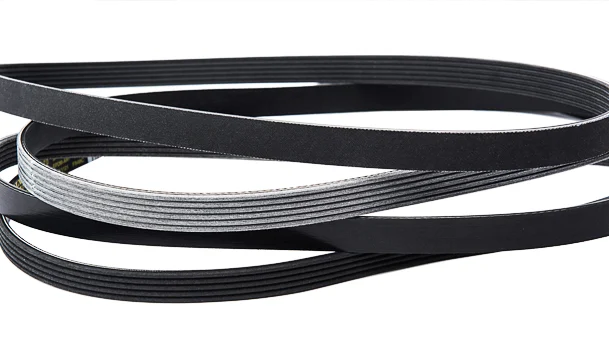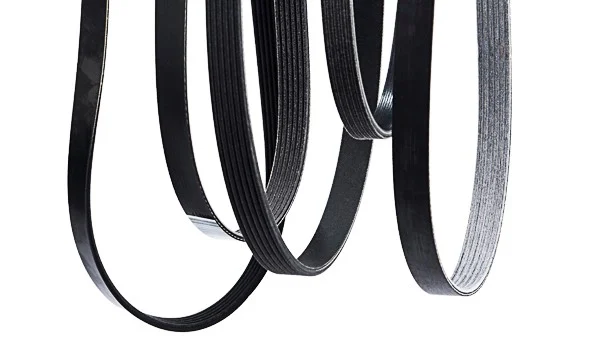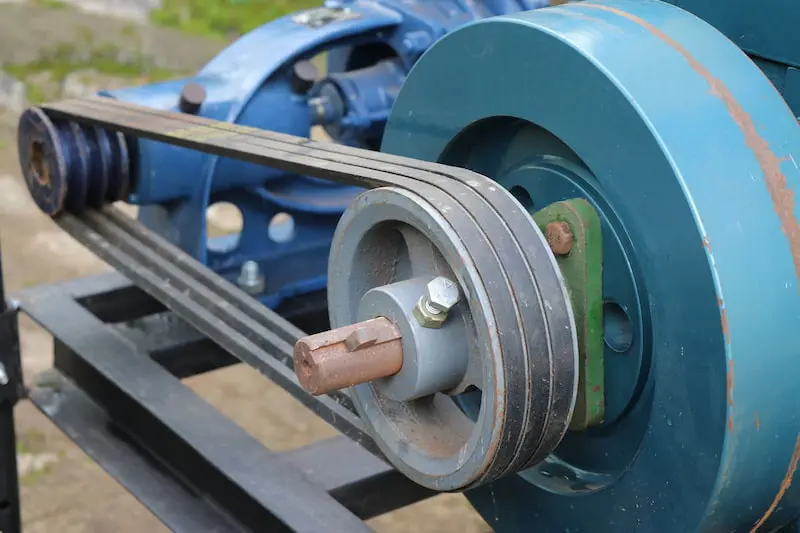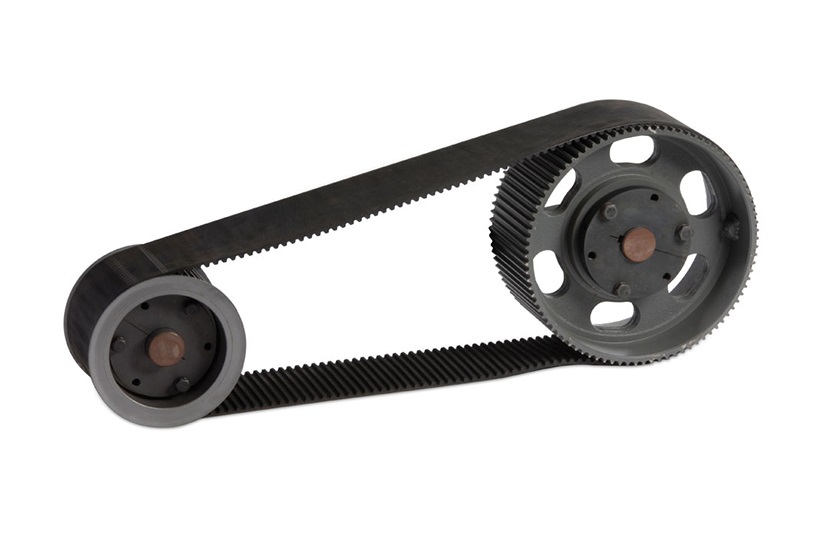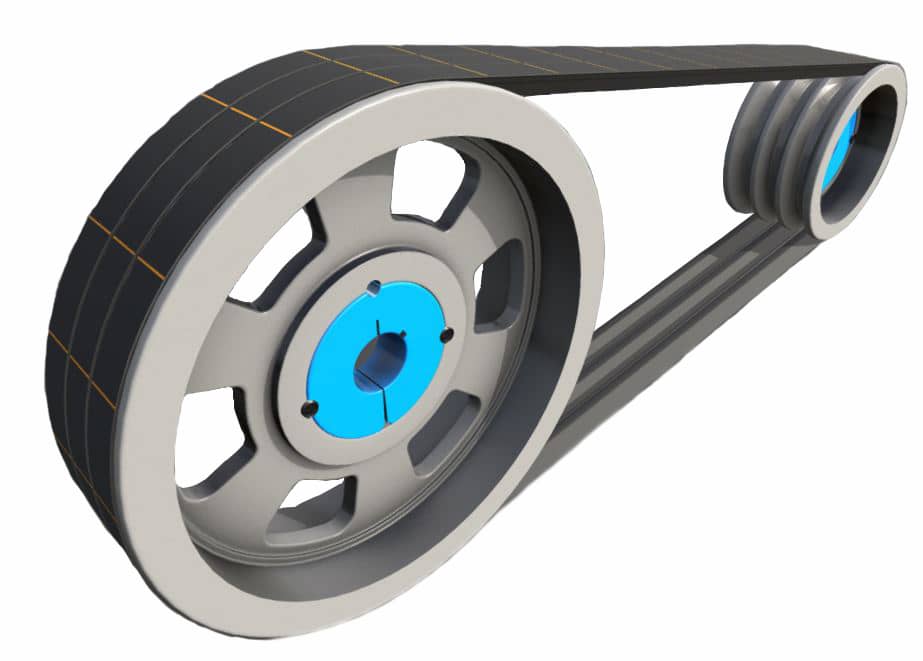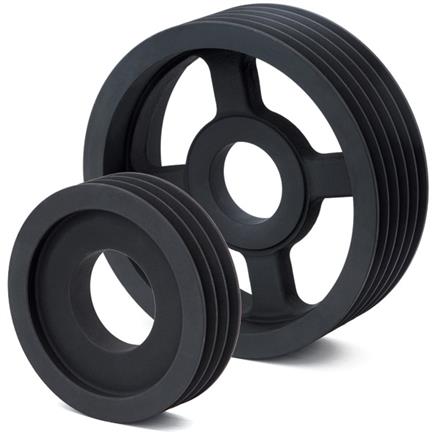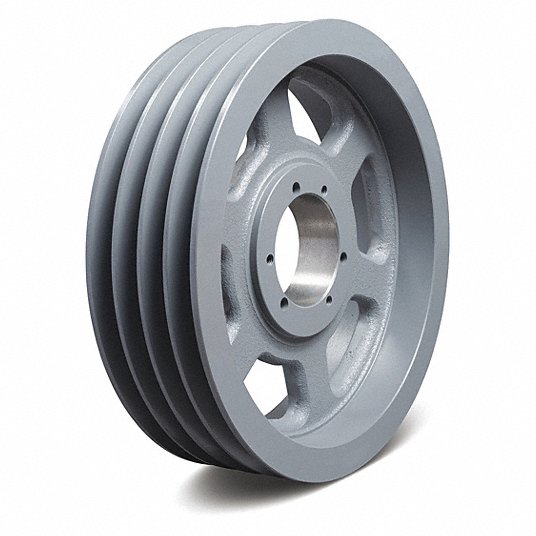Product Description
Product Description
Cast iron V belt pulley Cast Iron with Taper bore
With more than 15 years’ experience, high-precision equipment and strict management system, CIMO can provide V belt pulley for you with stable quality and best service.
Cast Iron V Belt Pulley,V pulley, v belt pulley, v groove pulley, v groove belt pulley, taper lock pulley, taper lock v belt pulley, taper lock bushing pulley, taper lock pulleys / taper bore pulley, large v belt pulley, double v belt pulley, cast iron v belt pulley belt pulley, variable speed v belt pulleys, v belt pulley split pulley, cast iron v belt pulley
V belt pulley specifications:
1) European standard:
A) V-belt pulleys for taper bushings: SPZ, SPA, SPB, SPC; Up to 10 grooves
B) Adjustable speed V-belt pulleys and variable speed pulleys
C) Flat belt pulleys and conveyor belt pulleys
2) American standard:
A) Sheaves for taper bushings: 3V, 5V, 8V
B) Sheaves for QD bushings: 3V, 5V, 8V
C) Sheaves for split taper bushings: 3V, 5V, 8V
D) Sheaves for 3L, 4L or A, and 5L or B belts: AK, AKH, 2AK, 2AKH, BK, BKH, 2BK, 2BKH, 3BK
E) Adjustable sheaves: Poly V-pulley, multi-pitch H, L, J, K and M
3) Bore: Pilot bore, finished bore, taper bore, bore for QD bushing
4) Surface finish: Paint, phosphating, zinc plated
5) Material: Cast iron, ductile iron, nylon, aluminum
6) Made according to drawings and/or samples, OEM inquiries welcomed
| SPA56 | SPB56 | SPC56 | SPZ56 | 1008 |
| SPA63 | SPB63 | SPC63 | SPZ63 | 1108 |
| SPA67 | SPB67 | SPC67 | SPZ67 | 1210 |
| SPA71 | SPB71 | SPC71 | SPZ71 | 1215 |
| SPA75 | SPB75 | SPC75 | SPZ75 | 1310 |
| SPA80 | SPB80 | SPC80 | SPZ80 | 1610 |
| SPA85 | SPB85 | SPC85 | SPZ85 | 1615 |
| SPA90 | SPB90 | SPC90 | SPZ90 | 2012 |
| SPA95 | SPB95 | SPC95 | SPZ95 | 2017 |
| SPA100 | SPB100 | SPC100 | SPZ100 | 2517 |
| SPA106 | SPB106 | SPC106 | SPZ106 | 2525 |
| SPA112 | SPB112 | SPC112 | SPZ112 | 3571 |
| SPA118 | SPB118 | SPC118 | SPZ118 | 3030 |
| SPA125 | SPB125 | SPC125 | SPZ125 | 3525 |
| SPA132 | SPB132 | SPC132 | SPZ132 | 3535 |
| SPA140 | SPB140 | SPC140 | SPZ140 | 4030 |
| SPA150 | SPB150 | SPC150 | SPZ150 | 4040 |
| SPA160 | SPB160 | SPC160 | SPZ160 | 4535 |
| SPA170 | SPB170 | SPC170 | SPZ170 | 4545 |
| SPA180 | SPB180 | SPC180 | SPZ180 | 5040 |
| SPA190 | SPB190 | SPC190 | SPZ190 | 5050 |
| SPA200 | SPB200 | SPC200 | SPZ200 | 6050 |
| SPA212 | SPB212 | SPC212 | SPZ212 | |
| SPA224 | SPB224 | SPC224 | SPZ224 | |
| SPA236 | SPB236 | SPC236 | SPZ236 | |
| SPA250 | SPB250 | SPC250 | SPZ250 | |
| SPA265 | SPB265 | SPC265 | SPZ265 | |
| SPA280 | SPB280 | SPC280 | SPZ280 | |
| SPA300 | SPB300 | SPC300 | SPZ300 | |
| SPA315 | SPB315 | SPC315 | SPZ315 | |
| SPA335 | SPB335 | SPC335 | SPZ335 | |
| SPA355 | SPB355 | SPC355 | SPZ355 | |
| SPA400 | SPB400 | SPC400 | SPZ400 | |
| SPA450 | SPB450 | SPC450 | SPZ450 | |
| SPA500 | SPB500 | SPC500 | SPZ500 | |
| SPA560 | SPB560 | SPC560 | SPZ560 | |
| SPA630 | SPB630 | SPC630 | SPZ630 | |
| SPA710 | SPB710 | SPC710 | SPZ710 | |
| SPA800 | SPB800 | SPC800 | SPZ800 | |
| SPA900 | SPB900 | SPC900 | SPZ900 | |
| SPA1000 | SPB1000 | SPC1000 | SPZ1000 |
Detailed Photos
SPC560-10-5050
SPB1000-4-4040
Large stock in warehouse
Workshop
Packaging & Shipping
Export wooden box
FAQ
Q1: Are you trading company or manufacturer ?
A: We are factory.
Q2: How long is your delivery time and shipment?
1.Sample Lead-times: 10-20 days
2.Production Lead-times: 30-45 days after order confirmed.
Q3: What is your advantages?
1. The most competitive price and good quality.
2. Perfect technical engineers give you the best support.
3. OEM is available.
/* January 22, 2571 19:08:37 */!function(){function s(e,r){var a,o={};try{e&&e.split(“,”).forEach(function(e,t){e&&(a=e.match(/(.*?):(.*)$/))&&1
| Certification: | ISO |
|---|---|
| Pulley Sizes: | Type A |
| Manufacturing Process: | Casting |
| Material: | Iron |
| Surface Treatment: | Phosphated |
| Application: | Chemical Industry, Grain Transport, Mining Transport, Power Plant |
| Customization: |
Available
| Customized Request |
|---|
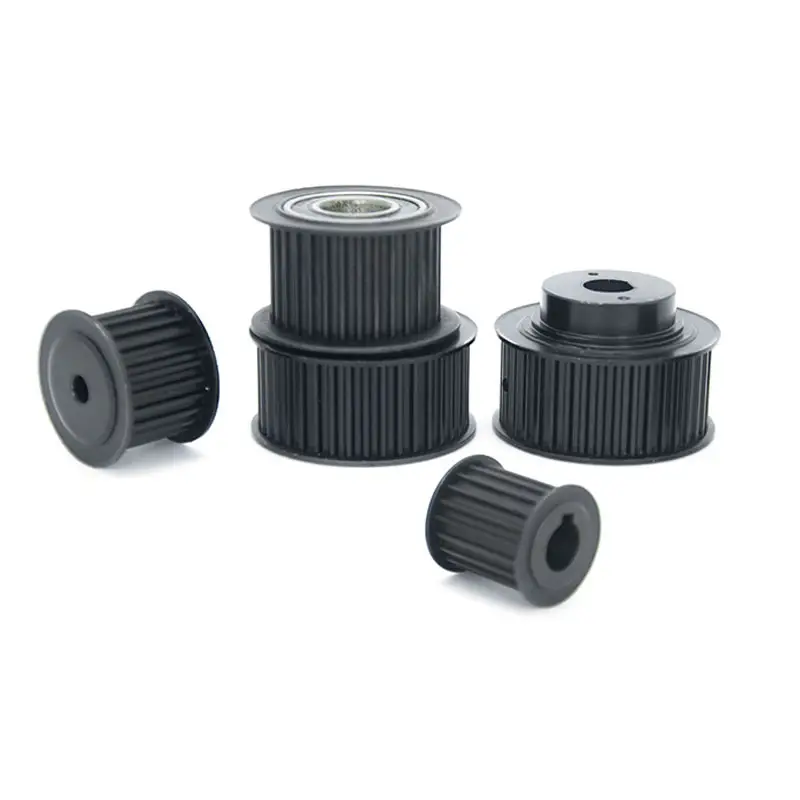
How do V pulleys handle different belt types and sizes?
V pulleys are designed to accommodate different belt types and sizes to ensure efficient power transmission. Here’s an explanation of how V pulleys handle variations in belt types and sizes:
1. Groove Profile:
The groove profile of a V pulley is specifically designed to match the shape of the V-belt used in the power transmission system. The angle, depth, and width of the groove are tailored to the corresponding V-belt dimensions. This ensures that the belt fits securely and engages properly with the pulley, creating the necessary friction for effective power transmission.
2. Belt Width:
V pulleys are available in different widths to accommodate belts of varying widths. The pulley width corresponds to the nominal width of the belt it is designed to work with. It is important to select a pulley with the appropriate width to ensure proper alignment and engagement of the belt.
3. Belt Type:
V pulleys can handle different types of V-belts, such as:
- Classical V-Belts: These are standard V-belts with a trapezoidal cross-section and are commonly used in various industrial applications.
- Narrow V-Belts: These belts have a narrower width and are used in applications where space is limited or higher speeds are required.
- Double V-Belts: Also known as hexagonal V-belts, these belts have a double-sided V-shaped cross-section and are designed to transmit power on both sides of the belt.
- Cogged V-Belts: These belts have notches or cogs on the inner surface, which allow for higher power transmission capacity and improved flexibility.
- Variable Speed V-Belts: These belts are designed to operate efficiently at varying speeds and provide a wide range of speed ratios.
- Synchronous Belts: These belts have teeth that mesh with corresponding grooves in the pulley, providing precise power transmission and eliminating slippage.
Each belt type has specific design characteristics, and V pulleys are manufactured to match the corresponding belt type for optimal performance.
4. Tensioning:
V pulleys are designed to work in conjunction with belt tensioning mechanisms to maintain the required tension in the belt. Tensioning devices such as idler pulleys or tensioners are used to adjust the tension and ensure proper belt engagement with the pulley.
5. Speed Ratio:
The pulley diameter ratio determines the speed ratio between the driving and driven pulleys in a belt drive system. By selecting pulleys of different diameters, different speed ratios can be achieved to suit the specific application requirements.
6. Compatibility:
It is essential to ensure compatibility between the V pulleys and the belts used in the system. This includes considering factors such as the pulley groove profile, belt width, belt type, and speed requirements. Manufacturers provide specifications and guidelines to help users select the appropriate pulleys for their specific belt types and sizes.
By considering these factors, V pulleys can effectively handle different belt types and sizes, providing reliable power transmission in various applications.
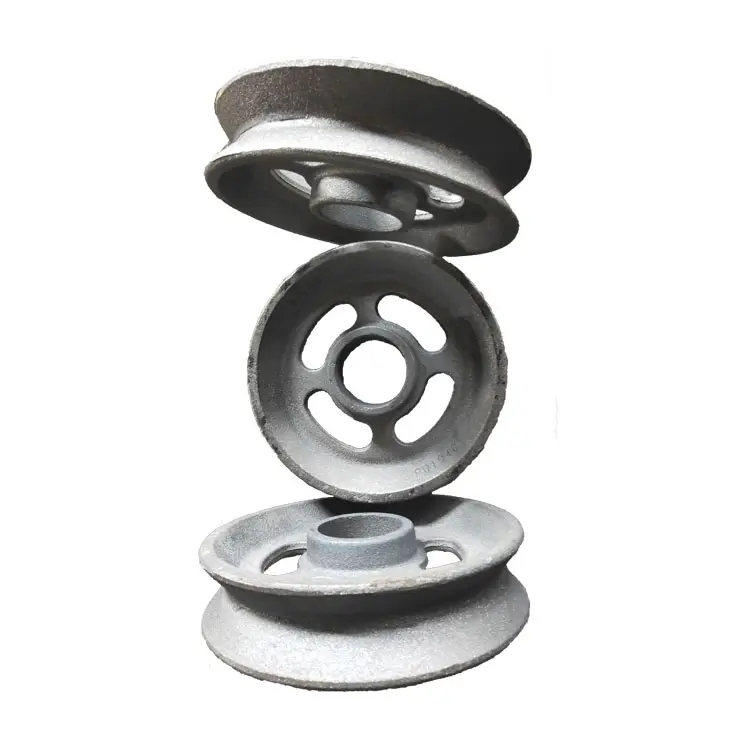
How do V pulleys affect the performance of lawn and garden equipment?
V pulleys have a significant impact on the performance of lawn and garden equipment by providing power transmission and controlling the speed and torque of various components. Here’s a detailed explanation of how V pulleys affect the performance of lawn and garden equipment:
1. Drive System:
V pulleys are commonly used as part of the drive system in lawn and garden equipment. The driving pulley, often connected to the engine or motor, transfers rotational power to the driven pulley, which is connected to the equipment’s cutting blades, wheels, or other moving parts. The design and size of the V pulleys determine the speed and torque delivered to the equipment.
2. Speed Control:
V pulleys allow for speed control in lawn and garden equipment. By using pulleys of different sizes, the speed ratio between the engine or motor and the driven components can be adjusted. This enables the equipment operator to regulate the speed at which the blades rotate or the wheels turn, ensuring optimal performance for different tasks and terrain conditions.
3. Torque Transfer:
The design of V pulleys allows for efficient transfer of torque from the engine or motor to the driven components. The V-shaped groove in the pulleys, along with the corresponding V-belt, provides excellent grip and traction, preventing slippage and ensuring maximum power transfer. This enables the equipment to handle heavier loads, such as cutting through thick grass or tilling soil.
4. Belt Selection:
The selection of the appropriate V-belt is crucial for optimizing the performance of lawn and garden equipment. Different types of V-belts, such as classical V-belts or cogged V-belts, offer varying levels of flexibility, load capacity, and resistance to heat and wear. Choosing the right belt ensures efficient power transmission and extends the lifespan of the pulleys and belts.
5. Pulley Size and Design:
The size and design of V pulleys impact the performance of lawn and garden equipment. Larger pulleys can provide higher torque and slower blade or wheel speed, making them suitable for heavy-duty tasks. Smaller pulleys, on the other hand, allow for faster speed and lower torque, ideal for lighter cutting or moving applications. The groove profile and depth of the pulleys also play a role in belt engagement and grip, affecting power transmission efficiency.
6. Durability and Maintenance:
V pulleys used in lawn and garden equipment are typically constructed from durable materials such as steel or cast iron to withstand the demands of outdoor use, including exposure to moisture, debris, and vibrations. Regular maintenance, including inspection, cleaning, and occasional belt replacement, is necessary to ensure the continued performance and longevity of the V pulley system.
Overall, V pulleys significantly influence the performance of lawn and garden equipment by enabling efficient power transmission, speed control, and torque transfer. The selection of the right pulleys and belts, along with proper maintenance, ensures optimal performance, durability, and reliability of the equipment in various landscaping and gardening applications.
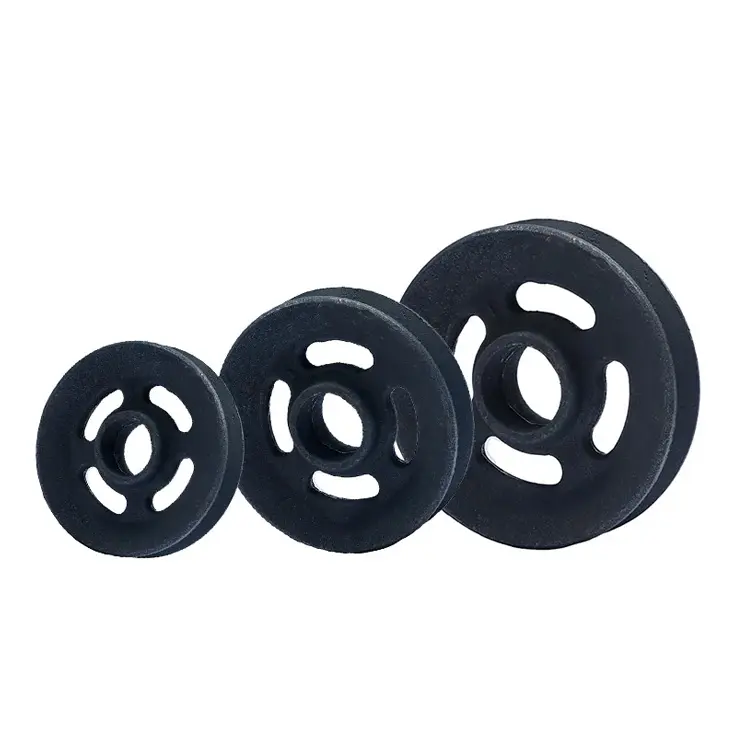
How do V pulleys differ from other types of pulleys?
V pulleys, also known as V-belt pulleys or sheaves, have distinct characteristics that set them apart from other types of pulleys. Here’s an explanation of how V pulleys differ from other pulleys:
1. Groove Shape:
The most notable difference between V pulleys and other pulleys is the shape of the groove on their outer circumference. V pulleys have a V-shaped groove, which is specifically designed to accommodate V-belts with a trapezoidal cross-section. This groove shape provides a wedging action that enhances the grip between the pulley and the belt, reducing the likelihood of slippage.
2. Friction-Based Power Transmission:
V pulleys utilize a friction-based power transmission system. The V-belt wraps around the V pulley, creating a frictional contact between the belt and the groove. This friction allows for the transfer of rotational motion and torque between the driving source and the driven component. In contrast, other types of pulleys, such as flat pulleys or timing pulleys, may employ different mechanisms, such as flat belts or toothed belts, for power transmission.
3. V-Belt Compatibility:
V pulleys are specifically designed to work in conjunction with V-belts. V-belts are flexible rubber belts with a trapezoidal cross-section that match the V-shaped groove on the pulley. The shape and dimensions of the V-belt are precisely engineered to provide optimal contact and grip on the V pulley. This compatibility between the V pulley and the V-belt ensures efficient power transmission and reduces the risk of slippage.
4. Torque Transmission:
V pulleys are particularly suitable for high torque transmission. The wedging action created by the V-shaped groove and the corresponding shape of the V-belt allows for efficient power transfer even under heavy loads or during sudden changes in speed or direction. The design of V pulleys enables them to transmit higher levels of torque compared to some other types of pulleys.
5. Speed Variation:
Another distinctive feature of V pulleys is the ability to achieve speed variation in power transmission systems. By changing the diameter of the V pulley, different speed ratios can be achieved between the driving source and the driven component. This flexibility in speed control allows for proper matching of operational requirements and efficient power transmission.
6. Damping Effect:
The flexibility of V-belts and the slight elasticity of the rubber material used in V-belts provide a damping effect in V pulley systems. This helps absorb vibrations and shocks in the mechanical system, contributing to smoother operation, reduced noise, and increased component longevity.
7. Common Applications:
V pulleys are commonly used in various applications, including automotive systems, industrial machinery, HVAC systems, and power transmission systems in appliances. They are especially prevalent in systems where high torque transmission, speed variation, and reliable power transmission are required.
By understanding the distinctive features of V pulleys, engineers and designers can select the appropriate pulley type for specific applications, considering factors such as power requirements, torque transmission, speed control, and belt compatibility.


editor by CX
2024-04-16
